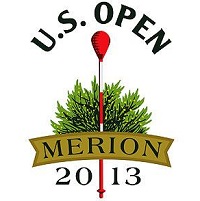Golf Channel, NBC Tee Up the Tech for U.S. Open

NBC and Golf Channel, now both part of the Comcast empire, are making a tech connection at this week’s U.S. Open golf tournament at historic Merion Golf Course in Ardmore, Pa., where they are combining to provide more than 70 hours of live coverage before a champion is crowned.
And when it comes to technology, we’re not talking about the latest shafts, drivers, putters and other gear the players will wield to attack the relatively short, yet historic (and presently soggy) course, but stretches of fiber, fleets of trucks, and other gear necessary to pull off the extensive video coverage that's been teed up for this week's big event.
“This is a big undertaking,” said Ken Goss, VP of sports production operations for Golf Channel and NBC, noting that the networks have deployed 14 trucks and in excess of 60 cameras to cover the Open.
One technical challenge was overcoming the way Merion is set up. The West course, where players practice and warm up, is close to a two-mile run from the East course, where the championship will play out. Golf Channel is originating its Live From The U.S. Open show from both areas.
In addition to the 520 miles of fiber NBC is laying down, Comcast ran an additional 112 miles of fiber between the courses in the months leading to the event, essentially linking the two courses with one backbone made of glass. “We couldn’t fly anything over the phone poles, so it had to be trenched,” Goss said.
The merger between Comcast and NBC Universal has led to this kind of cooperative effort. “We work together using a separate but combined infrastructure. WE can complement one another’s efforts and supplement each other’s shows,” said Dan Overleese, Golf Channel’s VP of TV network operations.
Some other tech snippets from this week’s event:
Multichannel Newsletter
The smarter way to stay on top of the multichannel video marketplace. Sign up below.
- NBC will use more than 60 cameras (16 are for Golf Channel’s coverage), including stationary “hard cameras,” handhelds, robotic cameras, a jib camera, and a “Hyper-X-Mo” super slow-motion camera that shoots 63,000 frames per second – enough to “show the compression of the golf ball as it is being hit."
- A special “Fly Camera” is fixed to a cable stretched across the entire length of the practice range and over the players.
- The networks are using 4,600 kilowatt and 2,200 kilowatt generators for the TV compound.
